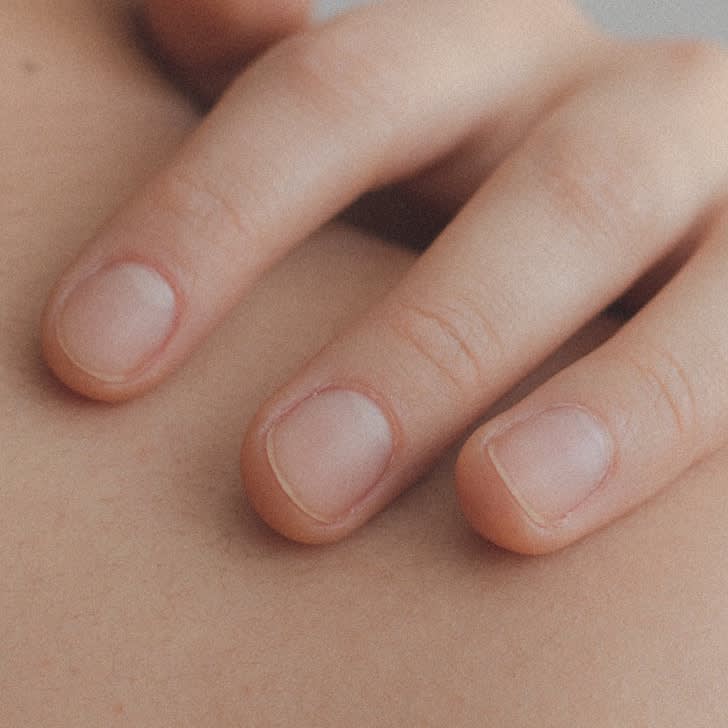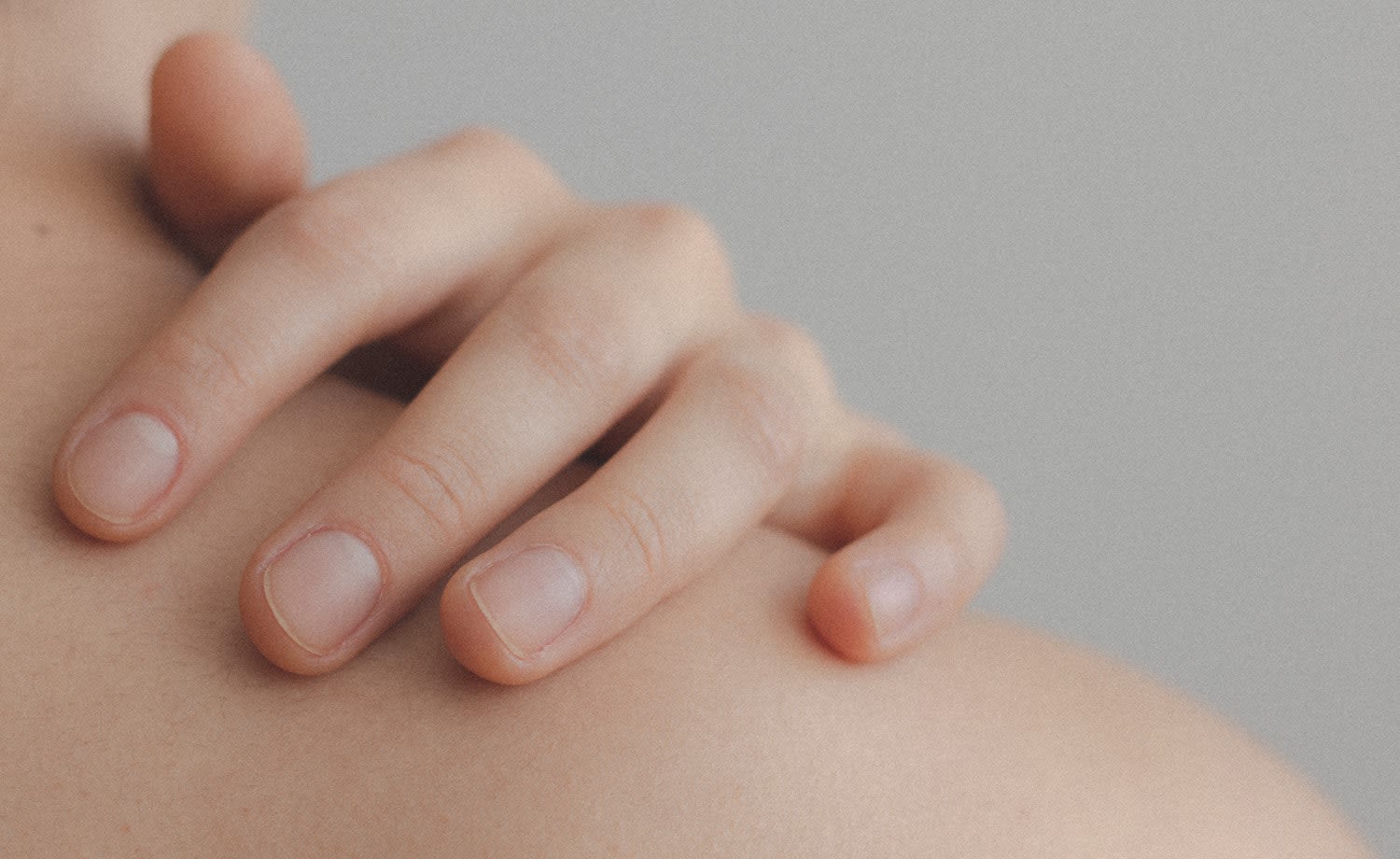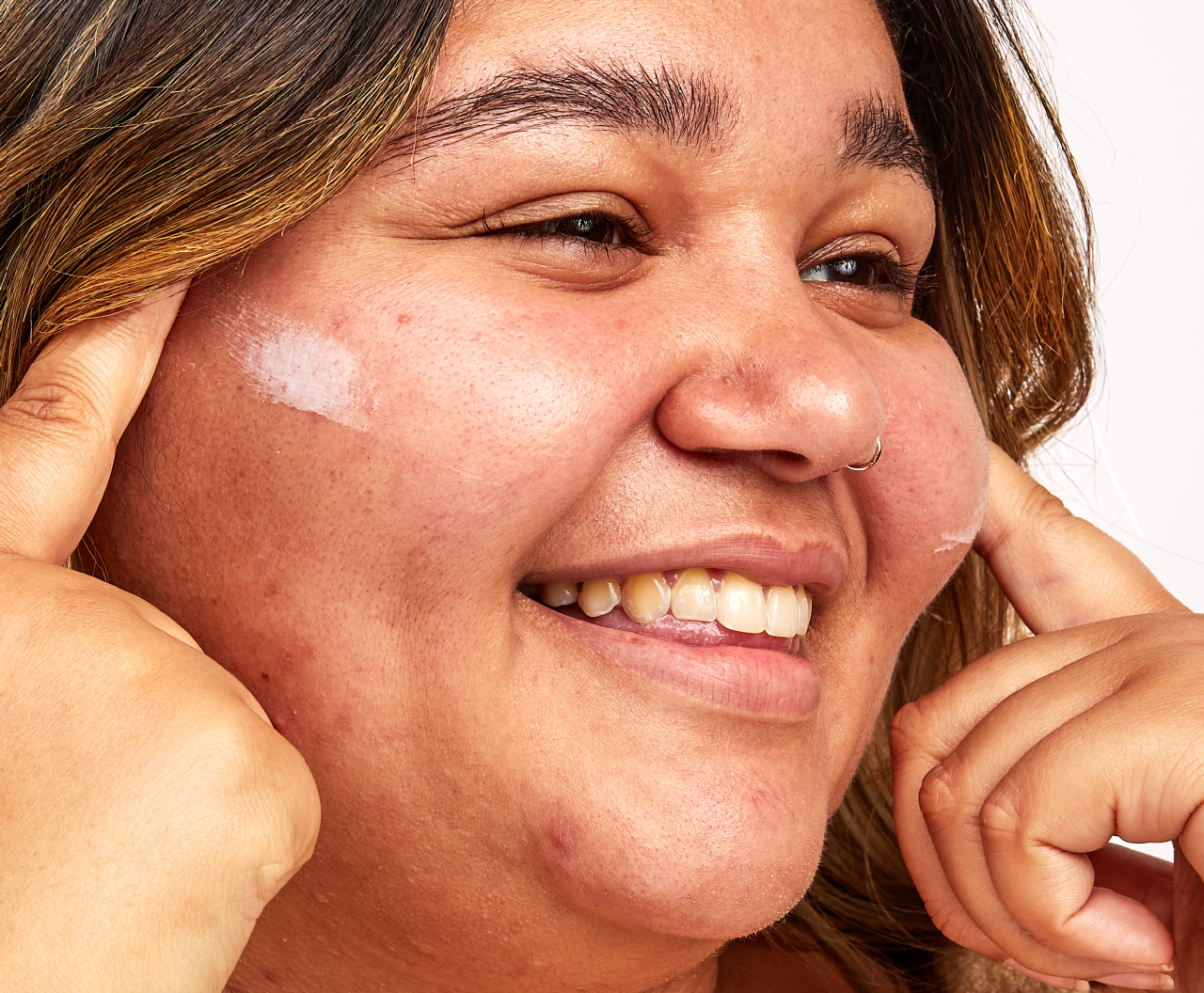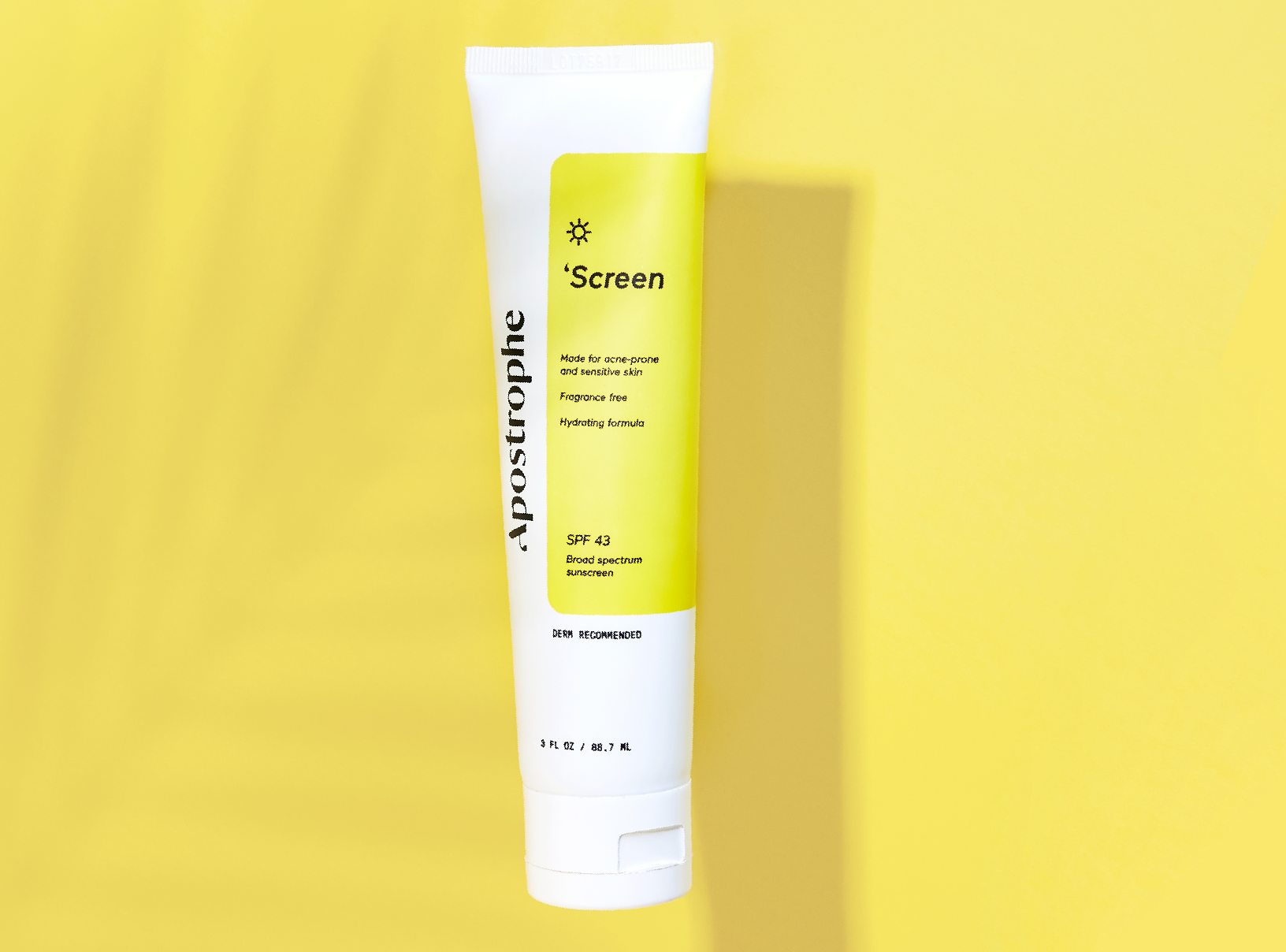Education
What is milia?: Causes, symptoms, and treatment


SHARE
Education
What is milia?: Causes, symptoms, and treatment
Medically reviewed by Katelyn Hagerty FNP
Written by Apostrophe Team
Last updated 4/1/2024
The surface of our skin can often form an interesting landscape made up of bumps, ridges, scars, pores, and everything in between.
Today, we’re jumping into one type of bump that you may have heard about most commonly in infants — milia.
What Is Milia?
Put simply, milia are small, hard bumps that form when dead skin cells get trapped in small pockets at the surface of your skin. They’re also known as “milk spots” or “oil seeds.”
These dead cells are made up of keratin, the protein found on many surfaces across your body, including your skin, hair, and the lining of your organs.
Dead skin cells will normally fall off as part of your skin’s natural renewal process. However, when those skin cells don’t fall off, they can remain in place and harden, forming the small white or whitish cysts on your skin that are indicative of milia.
While you may choose to have milia removed for aesthetic reasons, this skin condition is harmless and does not require treatment.
In fact, milia occurs in about half of all newborn babies and typically goes away on its own within the first few weeks of life.
Milia is often found on the face, but it can occur on other parts of the body.
Let’s jump into the causes of milia, and how the different types may show up on your skin.
What Are the Different Types of Milia Acne?
Milia comes in a variety of forms, differentiated by a number of factors, including the stage of life they occur in and their root cause. Here are the different types of milia and their causes.
Neonatal Milia
Neonatal milia is the most commonly occurring form of milia, occurring in 40 percent to 50 percent of newborns.
Newborn skin is still building up its exfoliating properties, which is what makes this condition so popular in babies. It usually goes away within a few weeks of birth.
Primary Milia
Primary milia is one of the two main categories of milia that occurs in adults. Primary milia is similar to the type seen in newborns and refers to milia that forms on its own, without any trauma to the skin. It will usually clear on its own within a few months.
Secondary Milia
Secondary milia occurs as a result of skin damage, appearing as the skin heals from its injury. It can be the result of a number of occurrences including sun damage, burns, friction, blisters, rashes, and topical medications.
Juvenile Milia
This type of milia will sometimes show up in newborns, but can also show up later in life. It is often linked to an inherited disorder.
Milia en Plaque
Milia en plaque is a rare form of primary milia that usually develops in people between 40 and 70 years old, presenting as clustered milia bumps. It is particularly prevalent in women.
Multiple Eruptive Milia
Another rare form of milia, this condition presents as groups of milia that are more numerous than what would normally be expected with primary milia.
These groups normally appear suddenly, usually on the face, arms, or abdomen, and can sometimes be irritated.
How Is Milia Diagnosed?
To figure out if those small bumps on your skin are, in fact, milia, you’ll want to consult with your dermatology provider. In most cases, they’ll be able to diagnose your milia visually.
However, if your condition is unclear, they can also perform a biopsy to further analyze a sample of your skin under a microscope.
Milia vs. Acne
It’s important to know that while milia is often confused for baby acne in infants, it is not a true form of acne.
Therefore, you should never try to remove milia yourself by squeezing at or attempting to pop the cyst out from your skin.
While you should never pop your acne, its formation in your pores may allow you to manipulate your skin in order to remove the blockage.
Unlike acne, milia forms under the surface of your skin, as opposed to in your pores. So, there’s no natural outlet to squeeze anything out of.
Attempting to remove milia on your own can only result in damage to your skin, which can lead to scarring.
What Are the Treatment Options for Milia?
Since milia is due to a lack of proper turnover in your skin cells, a gentle face exfoliant can help encourage skin turnover.
This can be an exfoliant that works mechanically by scrubbing at your skin, or a chemical peel or retinoid that encourages peeling of your skin.
Before starting any at-home treatment, you’ll want to consult with your dermatology provider to ensure that your chosen method is right for your skin.
If you choose to have milia removed by your medical provider for aesthetic reasons, there are a few options, including cryotherapy (where the cysts are frozen off), chemical peels, skin resurfacing treatments, laser surgery, heat therapy, and topical or oral medications.
How Can I Prevent Milia?
Your best option for preventing milia is a healthy skin care routine. The following tips are best practices for maintaining healthy skin, whether you’re actively managing milia or not:
Protect your skin from exposure to sunlight. Use a sunblock that is at least 30 SPF daily. This will protect your skin from sun damage and slow the signs of aging.
Wash your face twice a day. Washing your face in the morning and before bed (and moisturizing afterward) will help keep your skin clean and encourage healthy skin turnover.
Exfoliate your skin. You’ll want to consult your dermatology provider on this one, but using an exfoliant two to three times per week can help your skin get rid of those pesky dead cells and deter milia from forming in the first place.
The Bottom Line on Milia Acne
Milia is a harmless condition that occurs when your dead skin doesn’t fall off, creating hard cysts under the surface of your skin.
You can choose to treat it for aesthetic purposes, or allow it to run its course.
Maintaining a healthy skin routine is your best bet for the prevention of milia, but if it does occur, your dermatology provider can help you come up with a plan for removal and prevention.
References:
Milia. (2018, October 28). Cleveland clinic. Retrieved from https://my.clevelandclinic.org/health/diseases/17868-milia
Gallardo Avila PP, Mendez MD. Milia. (2021, August 11). In: StatPearls [Internet]. Treasure Island (FL): StatPearls Publishing; 2021 Jan-. Retrieved from https://www.ncbi.nlm.nih.gov/books/NBK560481/
Keratin. National cancer institute. Retrieved from https://www.cancer.gov/publications/dictionaries/cancer-terms/def/keratin
Does your skin have tiny white bumps? Leave them alone. (2019, September 27). Cleveland clinic. Retrieved from https://health.clevelandclinic.org/does-babys-skin-have-tiny-white-bumps-leave-them-alone/
Porter D. (2021, May 18). What are milia? American Academy of Ophthalmology. Retrieved from https://www.aao.org/eye-health/diseases/what-are-milia
Avhad, G., Ghate, S., & Dhurat, R. (2014). Milia en plaque. Indian dermatology online journal, 5(4), 550–551. Retrieved from https://www.ncbi.nlm.nih.gov/pmc/articles/PMC4228678/
Cho, E., Cho, S. H., & Lee, J. D. (2010). Idiopathic multiple eruptive milia occurred in unusual sites. Annals of dermatology, 22(4), 465–467. Retrieved from https://www.ncbi.nlm.nih.gov/pmc/articles/PMC2991730/
Acne. (2020, September 1). Cleveland clinic. Retrieved from https://my.clevelandclinic.org/health/diseases/12233-acne
Like what you just read? Sign up for our email list to get the scoop on skincare science delivered straight to your inbox.

Education
Best moisturizer for acne-prone skin
If you have combination acne-prone skin, figuring out which moisturizer is best for your skin might be tough. In this guide, we break down the best moisturizer for combination, acne-prone skin.
Read More
Education
How to build a face care routine
As you get into skincare, it might seem overwhelming, especially trying to figure out the order you're supposed to apply products in. Below, we detail how to build a face care routine for your skin!
Read More
Education
How to cure acne
Looking for a cure for your acne? Unfortunately, while there's no cure for acne, there are effective treatments for your acne. Below, we discuss the options for treating acne.
Read More
